coffee with sandi
Hi friends,
It’s been a while since I’ve done an interview, but they’re what I actually enjoy doing the most on this humble little blog (check out previous interviews with Tze, a missionary photographer/storyteller and Angeline, an amazing illustrator and calligrapher).
Today, I’m really excited to share Sandi’s stunning art and wisdom-filled words with you today. We first met as classmates in a course titled “The Christian Imagination”, and over the years, I’ve followed Sandi’s journey on Instagram as an all-round fabulous artist.
In this interview, find out what she enjoys most about the creative process, how you can incorporate space to create in your daily routine, and what God has been doing through her and through her art.
Sandi is available to take commissions, and she will be holding her first public show on April 2, 2020 at Regent College, where works from the show will be offered for sale privately. Scroll to the end of the article for details on how to get in touch with her. I hope you enjoy our (virtual) coffee chat below!
xx,
iz
Hi, Sandi! How would you describe your style of art/watercolour?
"As I’m discovering, artists are always evolving and are given to exploring new ways of working with their medium and playing with others. What was their style 5 or 7 years ago is no longer. I’m relatively new to the field so I’m still hanging around my early interests, namely charcoal, and more specifically portraiture, and with watercolour, specifically children’s illustrations. I dabble in landscapes but they don’t emerge as I imagine, so I go back to more detailed stuff. My watercolour style is probably too tight for its own good, and I’m learning to loosen up but that doesn’t come naturally.”
What was your first-ever work of art?
“That’s a hard one. I sketched a lot as a kid, but I don’t remember any work in particular. 15 months ago, I sat down with a rather large piece of mixed media paper along with a piece of soft charcoal and sketched a head and shoulders piece of 19th century fantasy writer, George MacDonald. My reference photo was smallish and black and white – taken by professional photographers, Elliot & Fey, in 1892. I know what people mean when they say they enter a timeless zone when they create. Three hours later, George MacDonald stared back at me from the page. I was hooked.”
At the back of the North Wind
“People talk about the final third of life as being more introspective, more contemplative and less ego-driven. When I sketch and paint, I feel deeply human in some mysterious way. That is, human in the original sense, aware of my earthy beginnings and my smallness in the scheme of things but sacred still.”
What do you enjoy most about the creative process?
“There are so many things I love about the creative process. There’s a sense of satisfaction when I create – even if and maybe especially when, it isn’t for any purpose except expression. I remember as a kid saying to my Mom, “I need to make something!” It’s in people to create, whether it’s building a good meal or sewing a quilt, thoughtfully arranging a cozy and safe space at home or between friends, playing with words that might shape a fun children’s poem, crafting a piece of writing that inspires, or playing with musical sounds.
I travelled to Paris a few years ago and visited Ille St Louis. With gelato in hand, I walked across the little bridge toward Notre Dame and without warning, four guys set up a jazz quartet and began playing. Soon a small crowd gathered and we became a swaying, toe-tapping community. The creative process is like that. It has a way of bringing people together. And I love that art takes on a life of its own when shared. It can open rich dialogue and depth of encounter with people across age, ability and cultural spectrums, for example.”
Amidst the busyness of life, how do you manage to keep creating?
“I think of my life in weeks rather than by days. I mean by that, I may not get to my palette and brushes every day but I can get there once every week. That framework helps me keep expectations realistic. Holding an active art-making space has been important to me too. Watercolour paint needs time to dry so there’s natural breathing space in the process.
My dining room table is big enough to accommodate two 18”X24” pieces of paper. I keep one taped down so I can add a glazed layer while the potatoes are cooking or if I have 10 minutes, I grab my sketch book and square off a colour palette with the sparkly iridescent paints I bought last week. I rarely finish a painting or sketch in one sitting. If I’m travelling, I bring my sketch book and a travel paint set. It’s been fun inviting people I meet to draw or paint something in my book. The best of souvenirs!
Something I’ve adopted more recently after a conversation with my friend and poet, Jolene, is to include creating as part of my personal liturgical practice. I’m an early riser and like to read and pray until first light. If I allow time to move directly from that quiet, inspired space into painting, sketching or writing, my work feels quieter, truer somehow. It feels like a visual version of Julia Cameron’s morning pages.”
“I’ve just finished writing a 12,000-word academic paper and creating throughout helped me stay sane. I heard a painter and professor once ask why creating can’t come first. Taking time to create is not like eating dessert before a meal. Creating can be the main thing. I like that.”
I wonder, too, if you’ve experienced any struggles creating art and/or being an artist?
“One of the greatest challenges is receiving the gift of the title. I’ve never identified as an artist. My sister is an artist. My grandmother, my grandfather, my aunt, my niece are all artists. Allowing the work to emerge and letting myself live into this new phase, as an artist, feels daunting, like I need to produce some great work to qualify. I know it’s rubbish but, at 59, it’s hard to change the way I think about myself.
The prospect of sharing work was another obstacle. I’m grateful for my Regent College Christian Imagination course in that regard. The course content, the readings and class discussion challenged me to reframe my thinking around sharing my work. I create as a human, created in the image of God. I offer the work of my hands as an oblation, a gift for others to engage with. I like that point of reference.
Making art for no reason presents a challenge. I’ve been conditioned, like most of us, to direct my efforts toward a purpose. I’m learning to accept that sometimes making something is good enough. Don’t we teach our children that? We’re thrilled with their efforts and celebrate with them their creative discovery. There’s such freedom in that.”
I’m very intrigued by your practice of illustrated journaling: How did you get started in it, and what do you love about it?
“I took an illustrated journaling course from one of my favourite artists, painter and author, Alison Watt. I wanted to add a visual component to my long habit of journaling. My illustrated journal is very simple and portable. I use it when we travel so I can paint and sketch from a small artists’ kit wherever we are – while awaiting a train, sitting on a ferry, picnicking in a park, for example.
As I mentioned, I invite children I meet to draw or paint something and the results are rich, indeed! It doesn’t matter if we speak the same language or not, a connection is made through art. It’s a terrific way of remembering a place or time or person that made the trip special.
My husband and I took an all-day train from Prague to Berlin a few years ago and sat across from a Polish business woman. I opened my journal and painted a simple version of the alphabet, decorating the letters with a bright palette of toys and children’s paraphernalia. As the woman prepared to disembark hours later, she placed her hand on my shoulder and thanked me. She said it was a most restful train ride, just watching me paint. I love that about illustrated journaling. It’s art on the go and people feel welcomed into it. It doesn’t have to be good, or even representative, just fun and hospitable.”
What (or who) inspires you lately?
“First off, my grandchildren inspire me immensely. They express such freedom and joy in their creative process, inviting me to be a little child with them. Their love for colour and mark-making gets at the heart of creativity – just do something that is fun and then, give it away! Last week I opened my mailbox to find handmade cards decorated with purple unicorns, all the way from Scotland. I can’t tell you how that breathed creative life into me.
I’m totally inspired by George MacDonald’s writing, especially his fairy stories, at present. I’m working on a series of fairy tale paintings that depict Grandmother and child as he presents them. I did not know my grandfathers, and I have adopted Grandpa George as mine. He embodies the quintessential grandpa.
I love the work of Arthur Rackham and Austrian children’s illustrator, Lisbeth Zwerger. I spend a lot of time pouring over their work and studying their style, attempting to capture their magic through sketching and watercolour.
I follow several children’s illustrators: Korean illustrator S. Hee, Canadian illustrator Mathilde Cinq Mars, Canadian illustrator Julie Morstad, American illustrator Abigail Halpin, and painter Paul Morstad. Not to compare my work with theirs – that would be disastrous. No, for inspiration and for the joy and wonder of their unique styles.”
What are some of the most beautiful things God has done - or is doing - through your art?
“The wonder of it for me is that what I create resonates with people. And that makes it easy for me to give my art away. For example, I’m fascinated with the Botanical Baby painting created by Mathilde Cinq Mars where she integrates flowers and foliage with a fetus in the womb. I keep going back to that painting, recreating it with a variety of palettes and giving the finished pieces away to people who are especially dear to me. That brings me such joy! And I hope it brings others joy too.
My family has been and continues to be enthusiastically supportive of my creative efforts. With some of my past pursuits, I hear them groan, “Oh Mom.” But with this, they’re excited and welcome almost anything I pass along to them. I love that.
When I began my MA at Regent College 9 years ago, I started in the Marketplace concentration. Never did I dream I would finish in the Arts concentration. Learning itself is a vulnerable endeavour, especially as a mature student and creating is right up there with it. It takes a lot of courage and sometimes I feel the gravity of that. Just yesterday I turned to my husband and said, “Who do I think I am? An artist or something?” So, there’s the imposter syndrome that lingers in my more vulnerable moments. But I feel God’s pleasure in it, encouraging me, bringing joy and fruit in the process.
People talk about the final third of life as being more introspective, more contemplative and less ego-driven. When I sketch and paint, I feel deeply human in some mysterious way. That is, human in the original sense, aware of my earthy beginnings and my smallness in the scheme of things but sacred still. That thinking along with the creative experience echoes the transcendent, even in terms of a sense of time. You’ve heard people talk about chronos and kairos time – the former is clocked time and the latter conveys the idea of the absence of awareness of time. When I create, I know what people mean by kairos. Creating is part of my spiritual practice because it feels like prayer – that transcendent, other-worldly sort of experience of timelessness and other-ness that’s difficult to describe.
Creating offers me a place of shelter in the storms of life, a haven and a place of soul-greening, if you will. Creating for me provides a practice of opening to the healing grace of God as it acts upon me. I sense God meets me at the stillpoint of my creative practices, something I hope my art reflects, albeit sporadically and marginally.”
Copenhagen Street


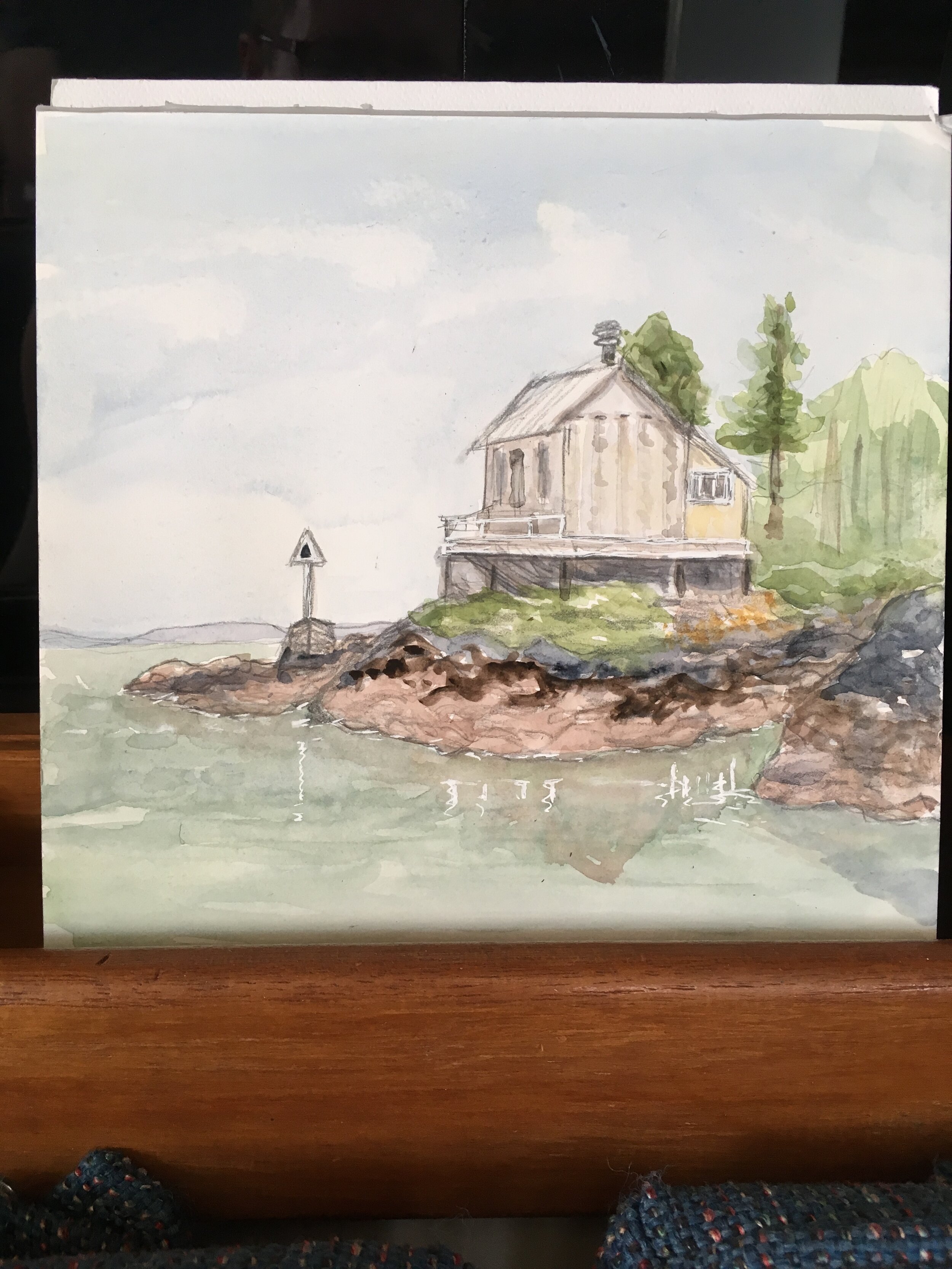
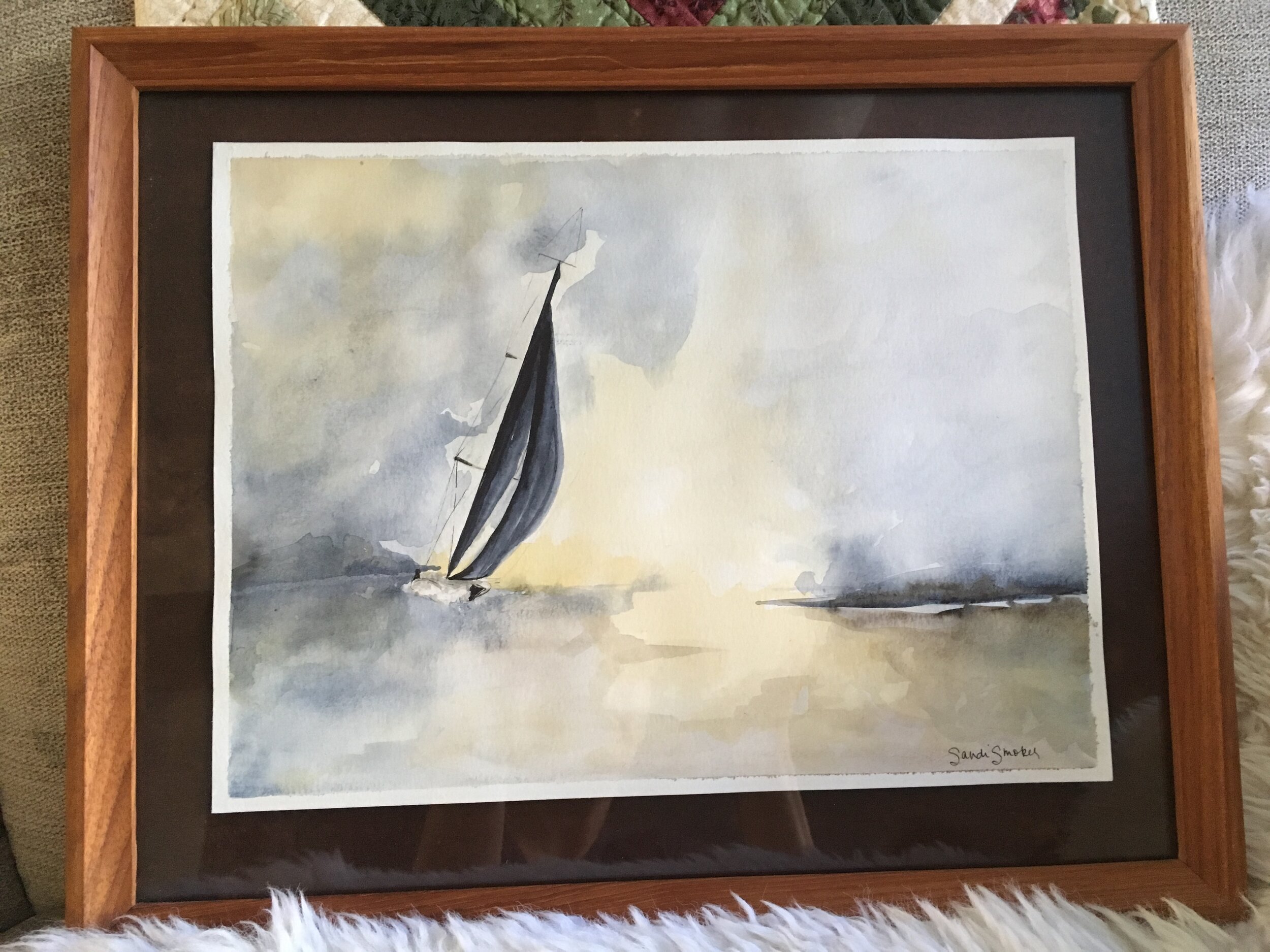
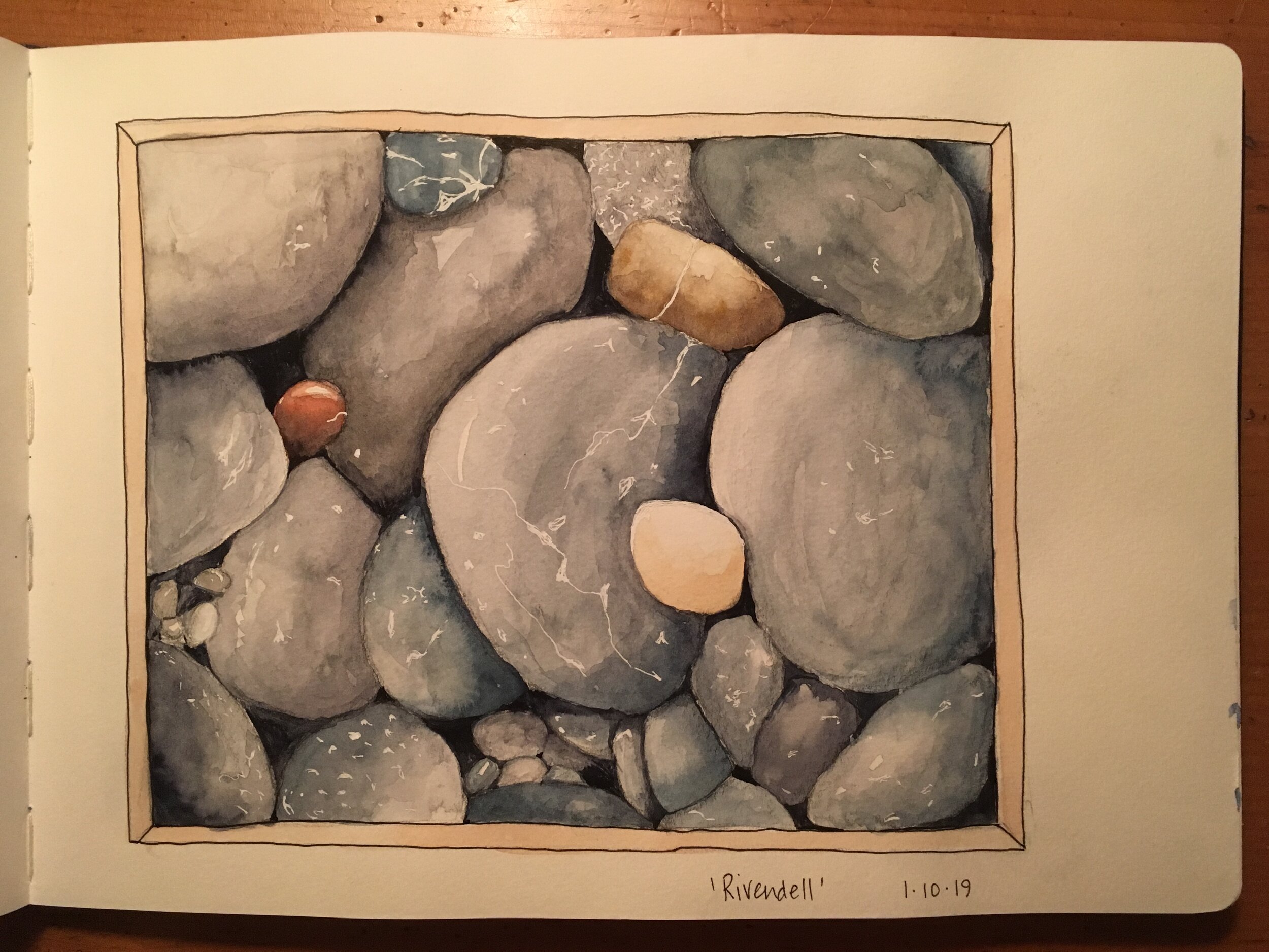

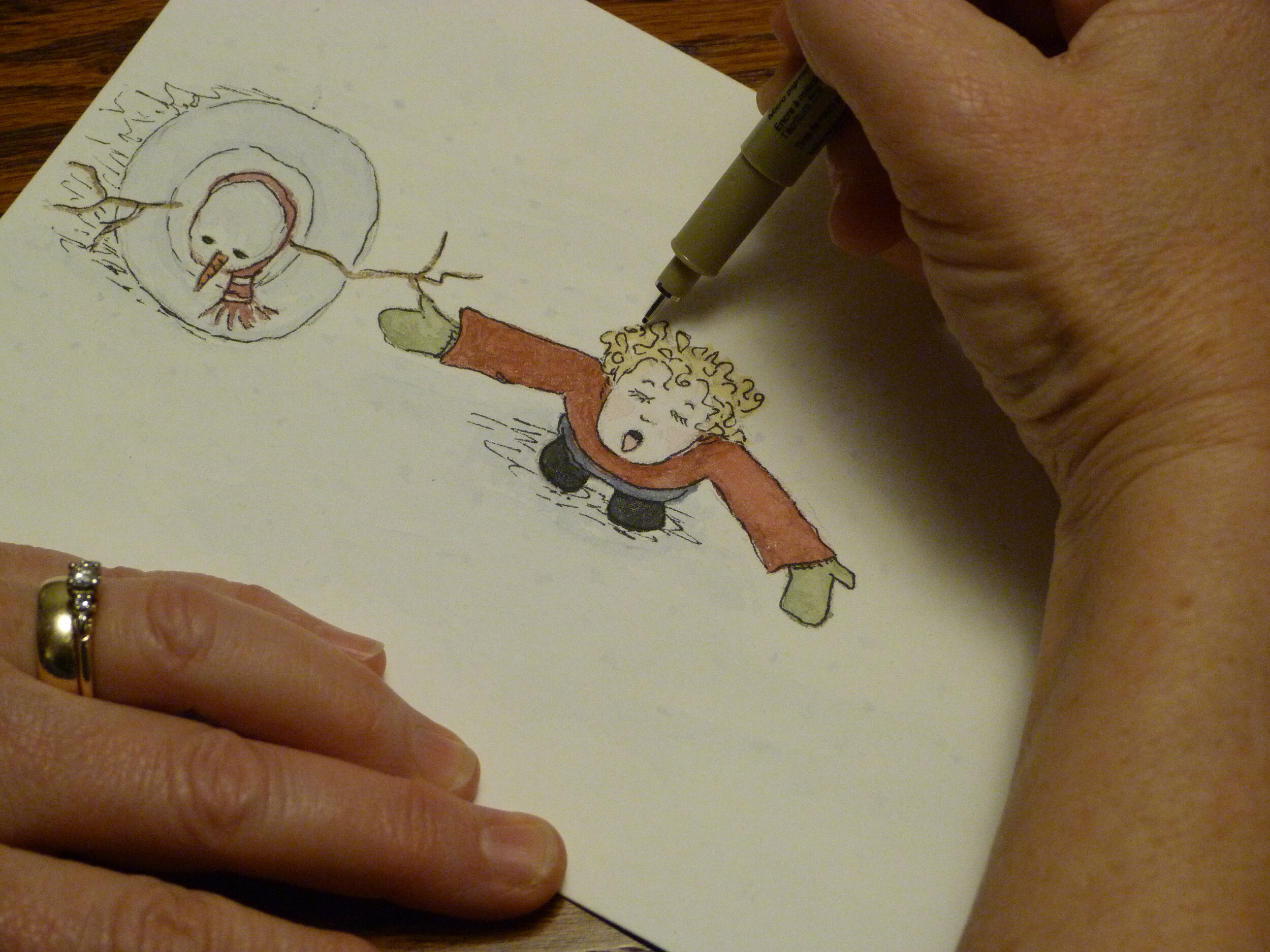
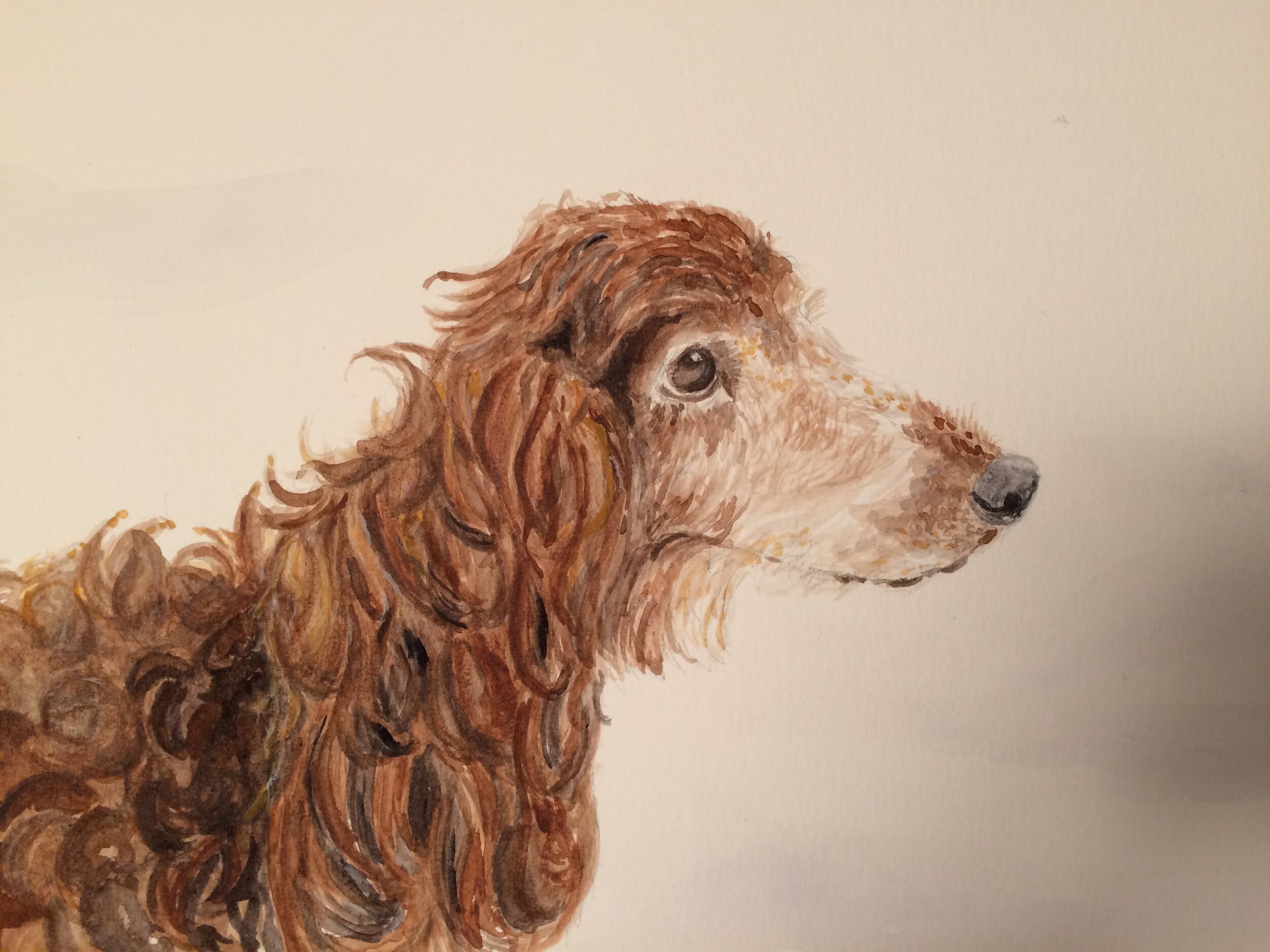
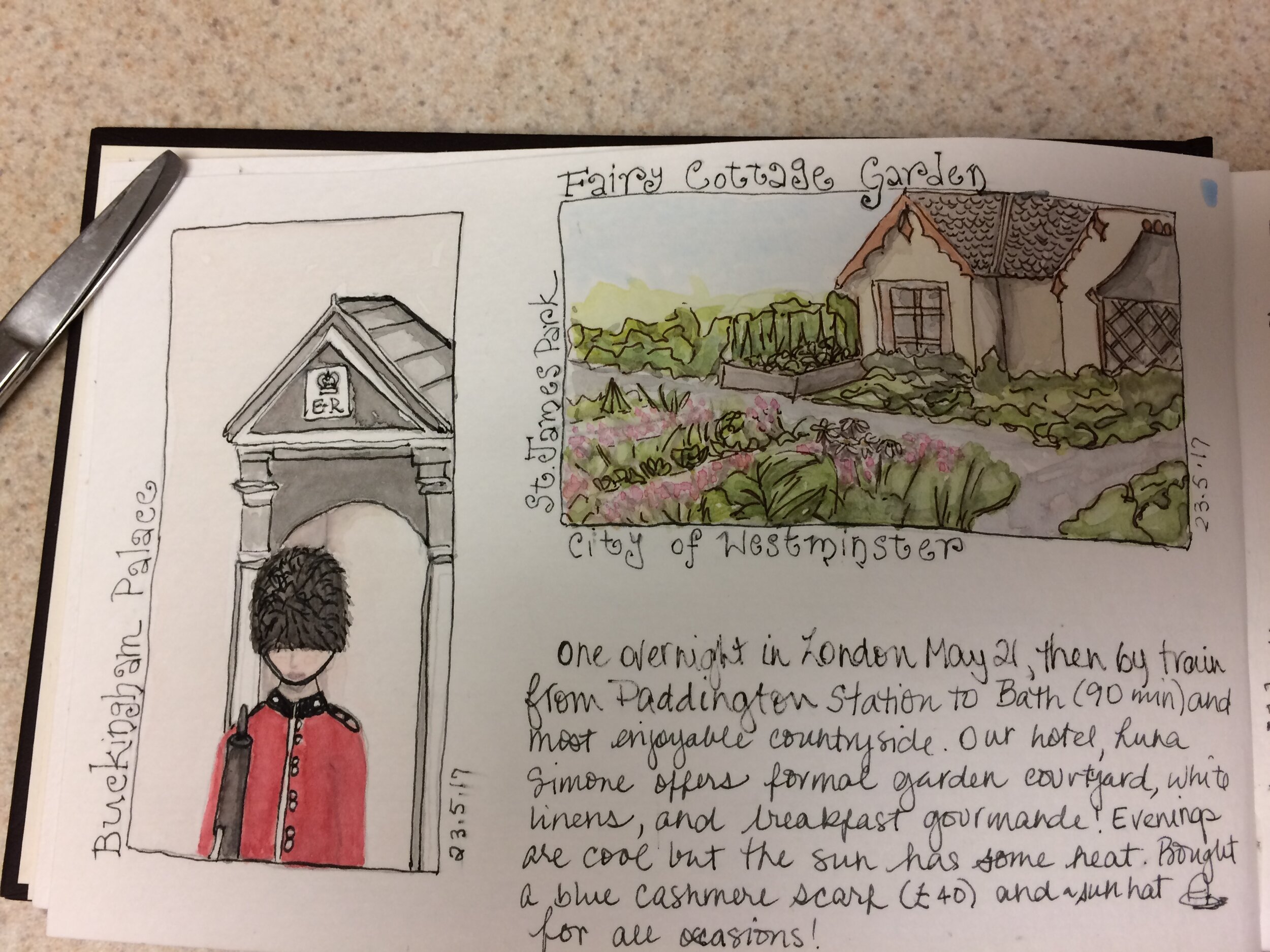
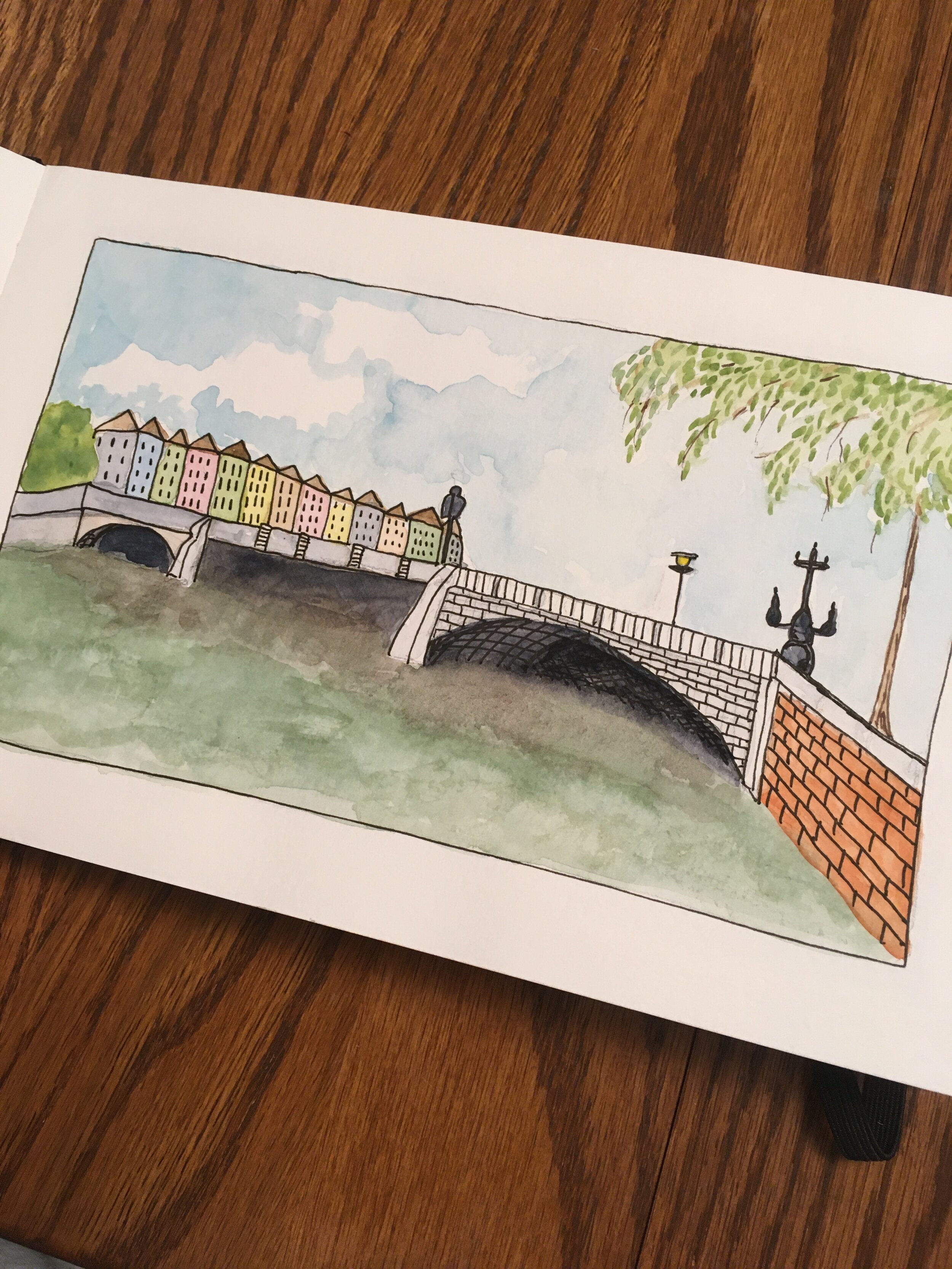

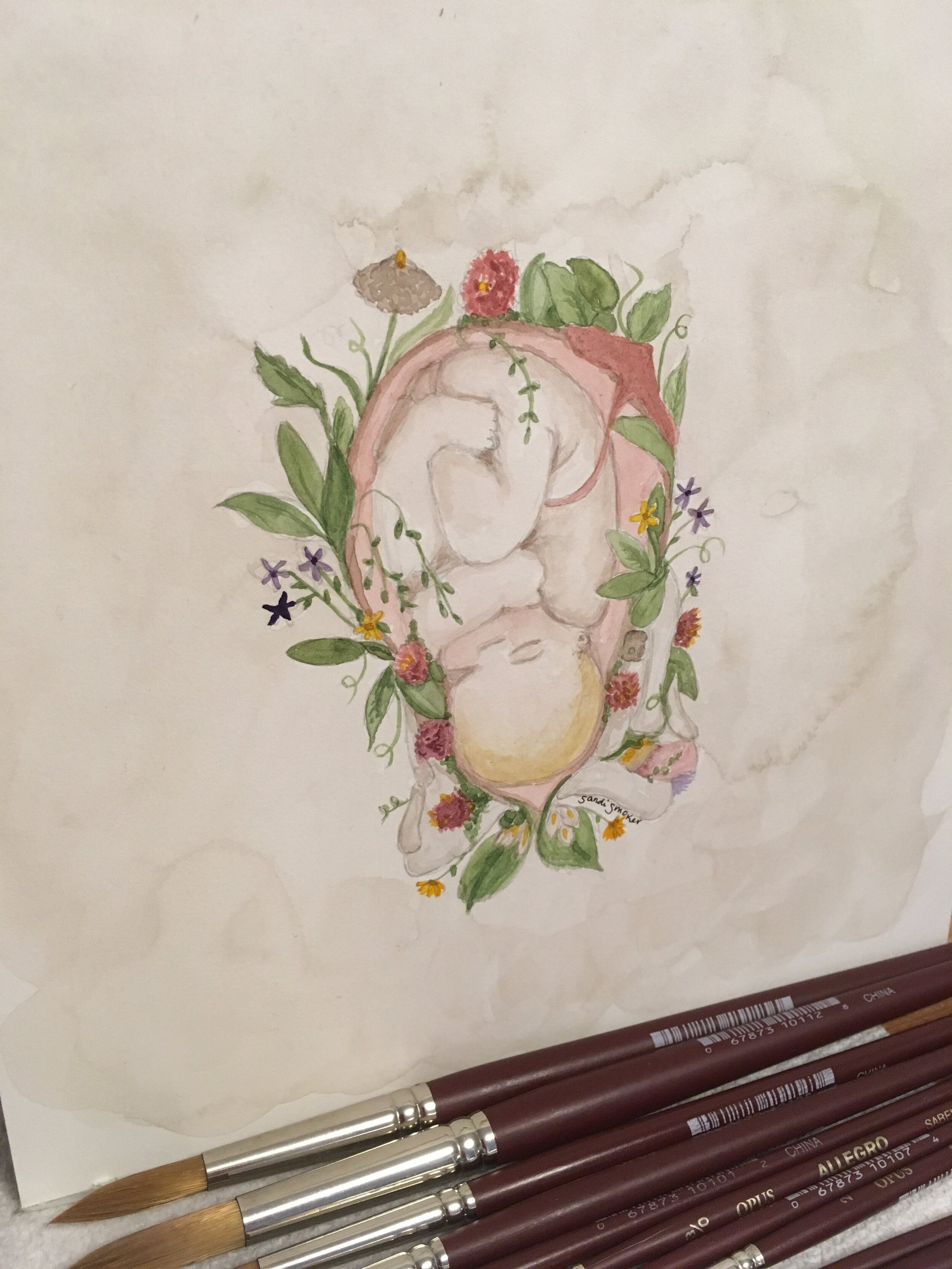





the Vancouver-based artist to put on your radar